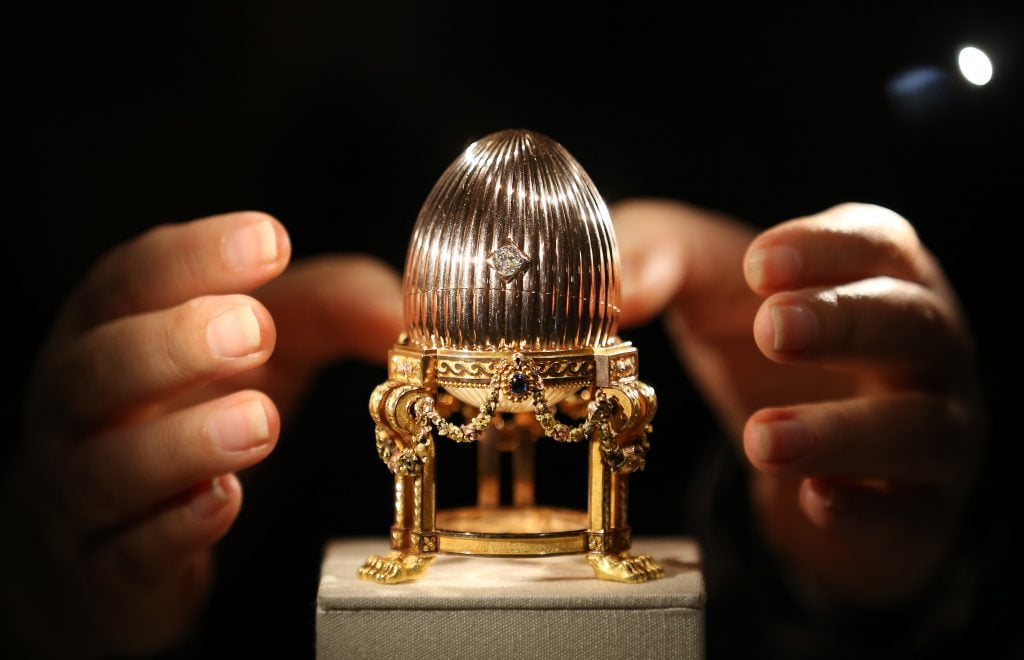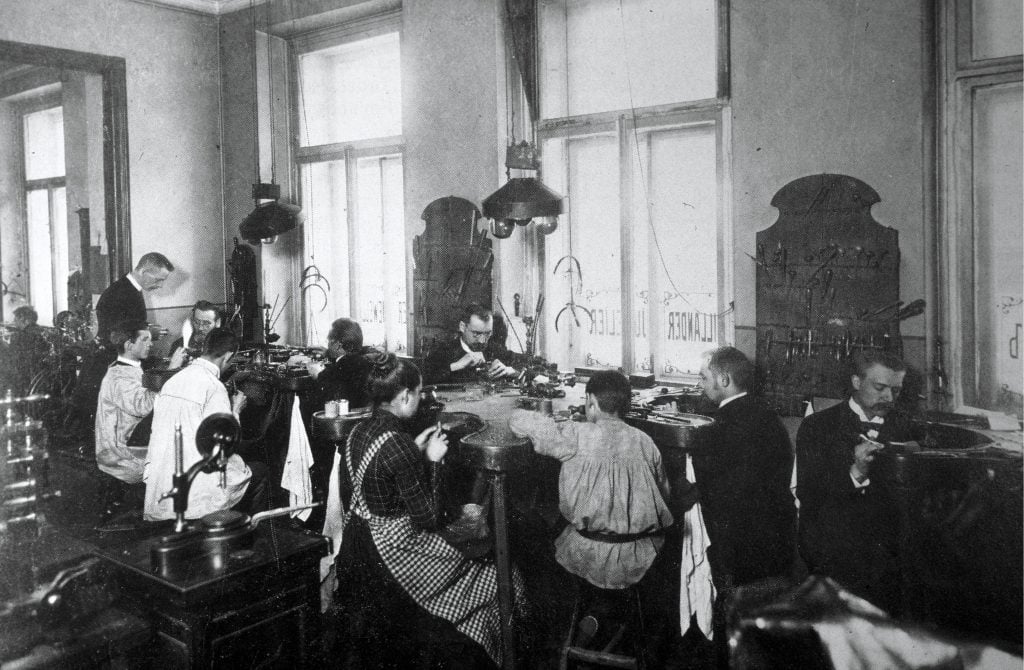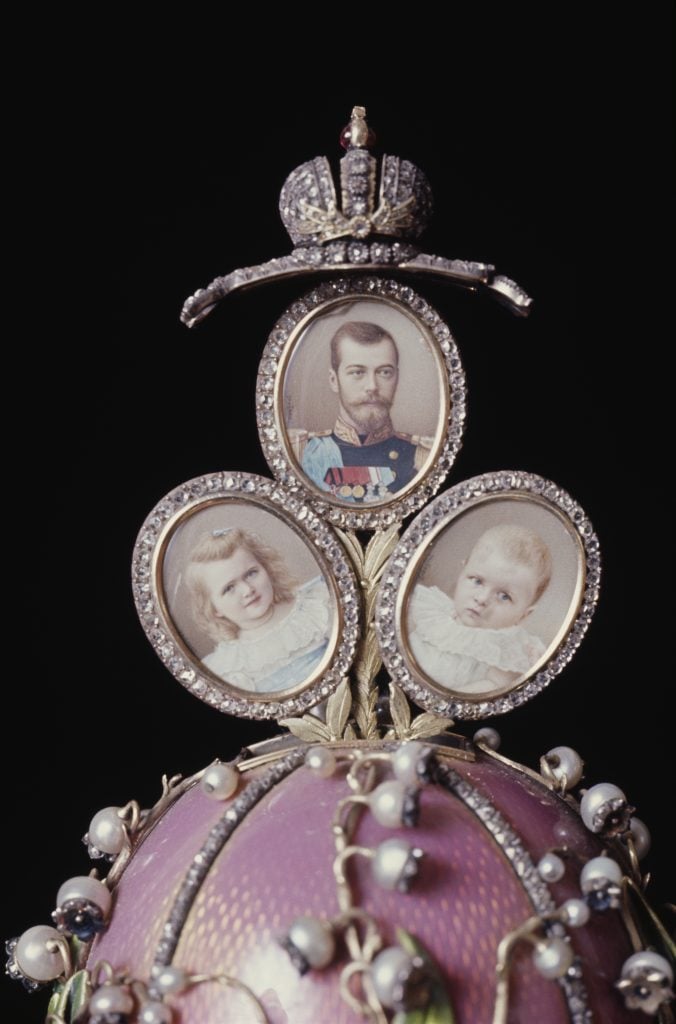Archaeology & History
The Hunt: An Imperial Family’s Fabergé Eggs, Still at Large
Fabergé’s bejeweled Easter eggs became a symbol of Russian autocracy. Then came the revolution.

Fabergé’s bejeweled Easter eggs became a symbol of Russian autocracy. Then came the revolution.

Tim Brinkhof

During the Easter celebrations of 1887, Russian emperor Alexander III presented his wife Marie Feodorovna with a jewel-covered Easter egg containing a ruby pendant. The egg, designed by the renowned jeweler Peter Carl Fabergé, was such a success with the imperial family that Fabergé went on to produce dozens more. By the turn of the century, his creation had become a symbol of Russian autocracy itself.
That same period also saw various revolutionary groups struggling to overthrow that autocracy. When one of these groups, Vladimir Lenin’s Bolsheviks, took over the country in 1917, most of the Romanovs’ gold, jewels, and other treasure was confiscated and placed inside the Kremlin Armory. Although Lenin had authorized the doing away of the czar and his family, his appreciation for fine art prevented him from pawning or destroying their inheritance.

The Fabergé egg workshop in Saint Petersburg, Russia, circa 1919. Photo: Eric Brissaud / Gamma-Rapho via Getty Images.
This inheritance—which included the Fabergé eggs—remained at the Armory until, in 1927, Lenin’s successor Joseph Stalin began to sell it off in exchange for much-needed foreign currency. Piece by piece, items previously kept inside Russia’s imperial palaces were taken out of the country. The Bolsheviks famously released Fabergé’s son from prison to evaluate some of the jewelry and gemstones, throwing him back in when he gave them an overvaluation.
Moving through the black market, many of the eggs ended up in the private collections of rich buyers like Armand Hammer, an American entrepreneur and president of Occidental Petroleum. Others ended up in small antique stores scattered throughout the world, where they were sold to unsuspecting people. An unidentified man from the United States made headlines when, in 2014, he learned he had purchased a $33 million egg at local shop for only $14,000. For years, he had been using it as decoration for his kitchen counter.

The Lilies of the Valley Egg, one of the Imperial Fabergé eggs created by Peter Carl Fabergé’s workshop for the Russian Imperial Family. It is surmounted by photographs of Tsar Nicholas II of Russia and his two oldest daughters, Olga and Tatiana. Photo: Tony Evans/Getty Images.
With seven of the 50 imperial eggs made by Fabergé still missing, it’s possible they too will turn up in the future. Fabergé aficionados briefly got their hopes up when U.S. authorities announced they had found an egg on the impounded superyacht of a Russian oligarch named Eduard Khudainatov. Unfortunately, it was later determined to be a fake.
While most Fabergé eggs turned out alright, the same cannot be said for their creator. When the Bolsheviks nationalized his Saint Petersburg-based firm, the jeweler jumped on a train and never looked back.
As the curator and Fabergé expert Géza von Habsburg later wrote: “When Fabergé saw that all was lost… he decided that was it, his whole world had collapsed, and he fled to Switzerland, where he died in 1920 of (I would say) a broken heart.”
The Hunt explores art and ancient relics that are—alas!—lost to time. From the Ark of the Covenant to Cleopatra’s tomb, these legendary treasures have long captured the imaginations of historians and archaeologists, even if they remain buried under layers of sand, stone, and history.